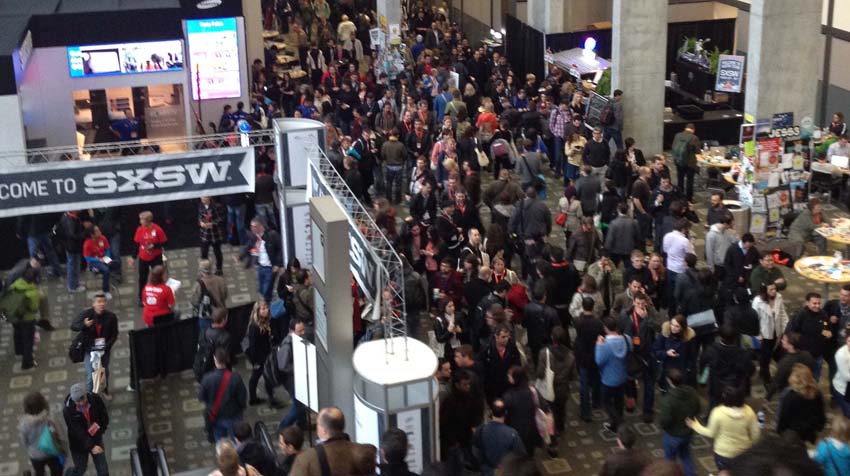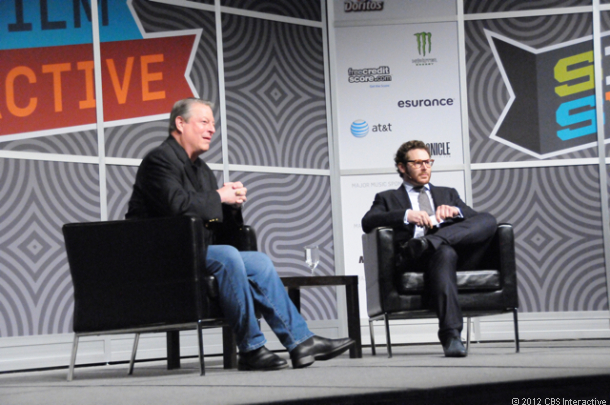What health conferences can learn from SXSW

As any techie who’s been to one, two or ten SXSWs can tell you, time has only made it flashier, more crowded and more over the top. Between parties, panels, flash mobs, keynotes, themed buses, and serendipitous run ins with celebrities (of the tech and Hollywood varietals)–everything is most certainly bigger in Texas.
2012 marks the first year that SXSW hosted an official health track as part of the core conference. Pretty strong signal to the tech community that digital health is primed and ready for their programming and creative superpowers. Although it was held in the distant (but swanky) AT&T Conference center, enthusiasts and companies alike showed up en masse, from startups like Massive Health and HealthTap to government folks like Aman Bhandari and Aneesh Chopra. It also welcomed a few less expected faces, like Aetna, who hosted an after hours, outdoor concert. And competing with swag from chapstick to stunna shades to the requisite slate of cool ts, the Nike Fuelband was by far the most popular item distributed (at the Path party, in case you missed it).
Any serial attendee will tell you that the serendipitous encounters with wildly interesting people over brisket and margaritas is the most compelling reason to attend. Sure, seeing Al Gore talk politics with Sean Parker was a programatic highlight and stroke of genius, but it also represents exactly why SXSW is special. It brings together every imaginable personality and background to celebrate creativity and innovation in an open, laid back environment to anyone who can foot the price tag. Exclusivity is limited only to the invite-only events that circulate in the weeks preceding the event, or the especially hot sessions. Even without a badge, there’s plenty to see and do. So much so, in fact, that there was actually a whole badgeless movement this year, designed around free content and events.
These organic run ins are where new ideas for collaboration and meaningful, even unexpected new partnerships are born. Sure, there is an exhibition space where hundreds of companies set up shop to formally present. But it is far less valuable than the connections made waiting in line at a food truck, or wandering down E. 6th from bar to bar. This more spontaneous approach is one of the main reasons that we put on the zenden; to help startups and investors, corporates and future users connect in a less forced environment. And it worked. Many early stage, less mature companies just aren’t ready for the trade show kiosk. Whether it’s due to the financial burden brought on by exhibition fees, designing graphics and shipping materials, or just because the format just isn’t conducive to their less established products. Trade shows just aren’t built with startups in mind.
Lisa Suennen’s recap as a first time attendee pointed out many of the key differences between a HIMSS or mHealth Summit and what you get in Austin. SXSW isn’t just about closing deals or setting up a pre-determined agenda–it’s about meeting people and opening more doors to walk into after the event. It’s also not all in one venue, in fact, it’s spread out all over downtown Austin, sometimes at an inconvenience. But the shuttle rides and forced interactions with strangers even to sort out logistics can net out interesting and meaningful conversations. And perhaps that’s what SXSW does best: it takes each attendee slightly out of their comfort zone, whether it’s an introduction to something new and unexpected, or staying out past 2am with tattooed hipsters for the first time in 10 years (or ever). After attending a few health conferences, I certainly crave this type of vicarious, open environment. And it seems with the next generation of thinkers and innovators in digital health stepping up that this trend will only continue to proliferate.
None of the companies from our current term at Rock Health attended (it’s heads down time!), but we did have several teams from our first class make the trip, including Pipette, whose recent acquisition helped Ginger.io take home the health prize in the startup accelerator. And it’s events like this that give me hope that many of Jay Parkinson’s very valid concerns with SXSW (aka the media’s adulation of photo sharing and social apps) are changing. Perhaps the tide, even in Austin, is finally shifting toward featuring companies that are building something useful.
Didn’t make it? Here are a few great wrap ups of SXSW:
Massive Health’s best of SXSW
As the crowd swells, new tools emerge for intimate relationships
SXSW geekfest veering from social media to health education
And for those of you wholly new to the SXSW phenomena, here’s a visual breakdown of exactly how the event has evolved over the years.

Image credit: RockSauce Studios
